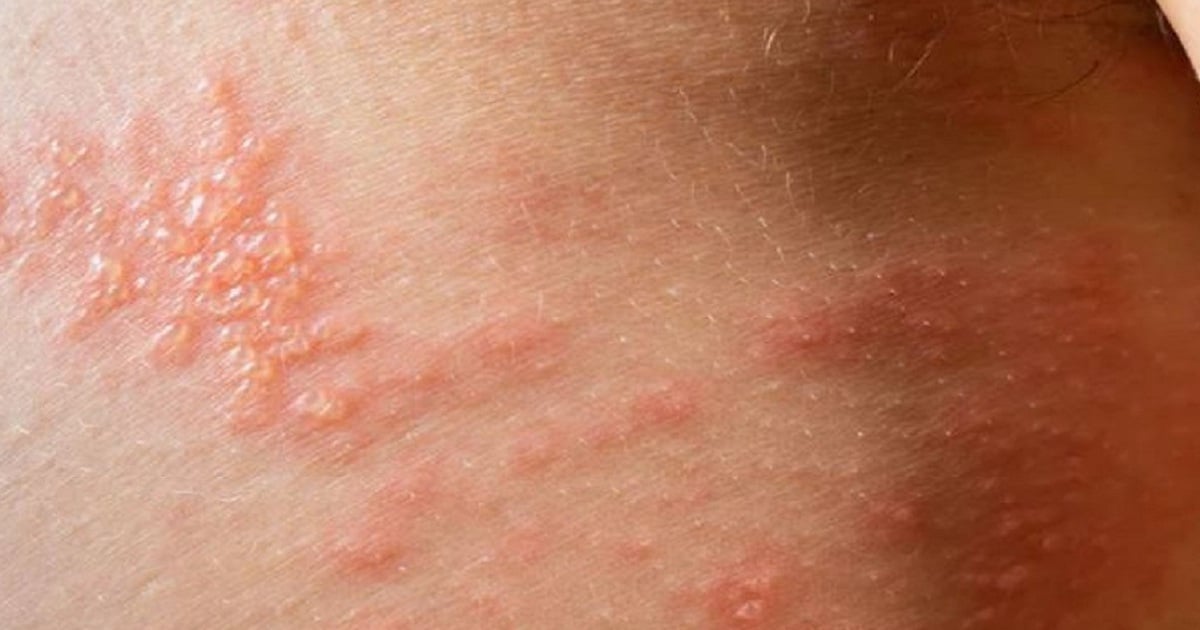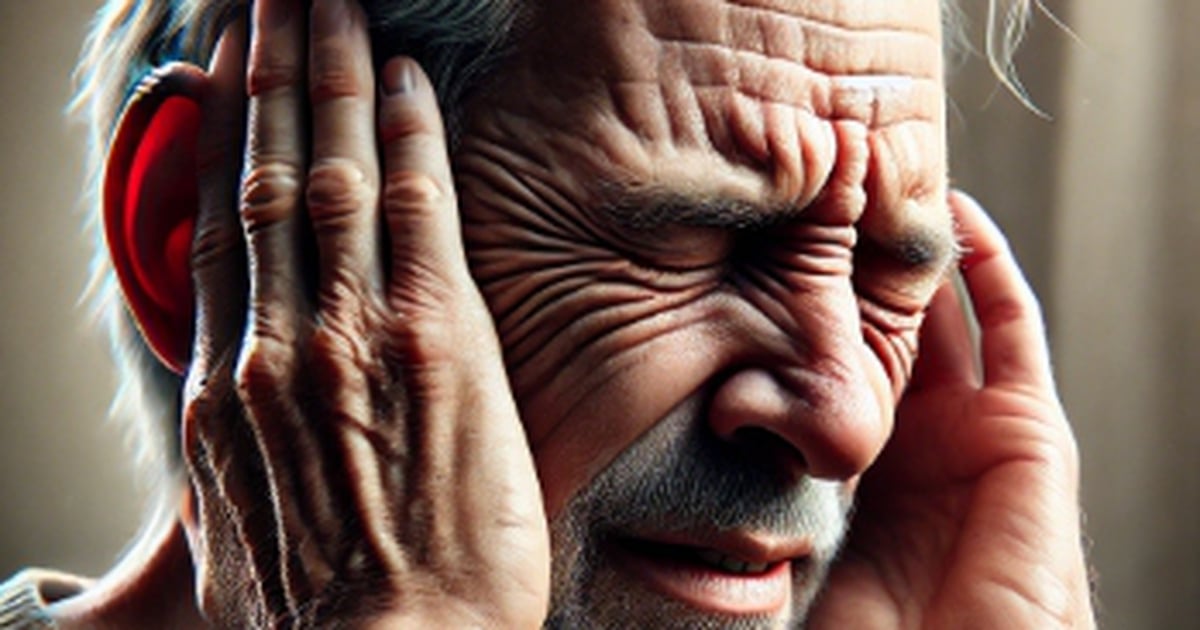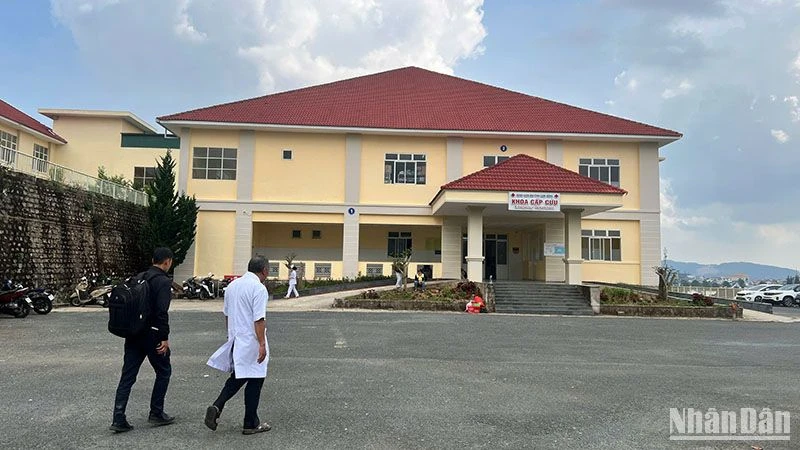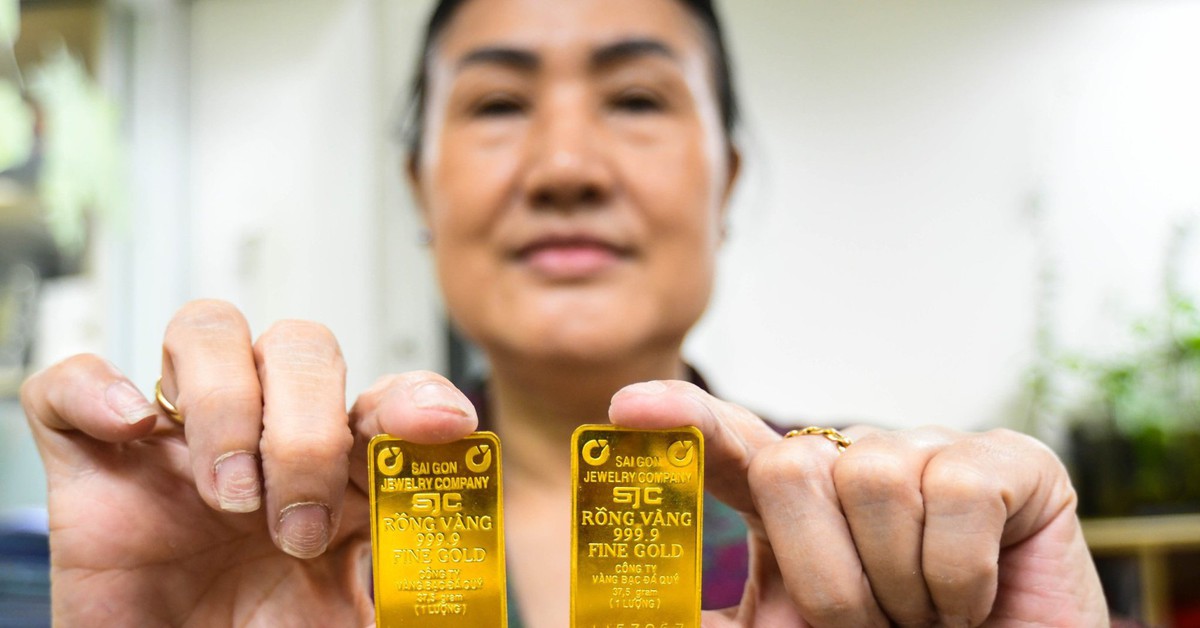
Chickenpox is characterized by blisters on the skin - Illustration photo
According to doctors, shingles, also known as herpes zoster or herpes zoster, is a skin infection caused by the Varicella zoster virus (VZV) - the virus that causes chickenpox. After having chickenpox and recovering, some Varicella viruses still exist in a latent state but do not cause disease.
These viruses reside in nerve ganglia for months or years. When favorable conditions such as immune deficiency due to old age or illness, mental trauma or physical weakness are encountered, this virus will reactivate.
They multiply and develop in the sensory nerves, and spread to the skin, damaging the mucous membranes and skin, thereby causing shingles. That is the reason why shingles is not only a skin disease but can damage the nerve roots.
The disease occurs in all ages but is more common in adults than in children, especially in adults over 50 years old. Patients often have complications and sequelae such as infection, ulcers, scarring and post-herpetic neuralgia, which is the most common complication.
When you have shingles, the affected skin area will have a red rash. These rashes will turn into blisters and gather in clusters.
In the early stages, the blisters swell and contain clear fluid. After a few days, they gradually turn cloudy and turn into pus, then the blisters burst, forming scabs that gradually peel off after drying, leaving scars on the skin. Common symptoms in patients are:
- Tired and sleepless.
- Pain before, during and after skin damage.
- Itching, burning or sensory disturbances in the affected skin area.
- Blisters, blisters in clusters.
Older people are susceptible to disease because their immune systems are aging.
At the recent national gerontology conference held in Hanoi, reports showed that Vietnam will officially enter the aging population period in 2036.
People aged 60 and over accounted for 11.9% of the total population in 2019 and this figure is expected to increase to more than 25% by 2050. This has a significant impact on health care services as this population has higher health care needs.
According to Mr. Nguyen Trung Anh - Director of the Central Geriatric Hospital, the average life expectancy of Vietnamese people according to the latest statistics has reached 74.5 years old (in 2023), much higher than 30 years ago (1993) with 65.5 years old.
However, with this life expectancy, each person has an average of 14 years living with illness. In the group over 60 years old, each person has 2.6 co-morbidities, and in the group over 80 years old, each person has an average of 6.9 illnesses.
As we age, our immune system’s response declines over time, says Dr Raunak Parikh, global medical director, GSK. The effects of this decline become most apparent from the age of 45-50 and worsen with age, increasing the risk of infection and disease.
There is no exact age at which immunity begins to decline, but generally the immune system begins to change gradually with adulthood, making people more susceptible to disease, said Mr. Raunak.
The most common diseases in the elderly are cardiovascular disease, diabetes, cancer, chronic obstructive pulmonary disease... Herpes zoster is also a common disease in the elderly, it is estimated that 1 in 3 people will have this disease in their lifetime, causing pain, rash and other rare complications such as stroke, myocardial infarction.
To prevent disease, Mr. Raunak recommends "listening to your body", exercising regularly, within your capacity, and having regular health check-ups. In addition, people used to pay attention to vaccinations for children, but now they should pay attention to vaccinations for adults to help prevent diseases for which vaccines are available.
Source: https://tuoitre.vn/luc-nho-mac-thuy-dau-ve-gia-se-mac-zona-vi-sao-20241014090502094.htm




![[Photo] Looking back at the impressive moments of the Vietnamese rescue team in Myanmar](https://vstatic.vietnam.vn/vietnam/resource/IMAGE/2025/4/11/5623ca902a934e19b604c718265249d0)


![[Photo] "Beauties" participate in the parade rehearsal at Bien Hoa airport](https://vstatic.vietnam.vn/vietnam/resource/IMAGE/2025/4/11/155502af3384431e918de0e2e585d13a)






















![[Photo] Summary of parade practice in preparation for the April 30th celebration](https://vstatic.vietnam.vn/vietnam/resource/IMAGE/2025/4/11/78cfee0f2cc045b387ff1a4362b5950f)




























































Comment (0)